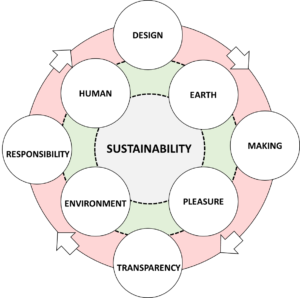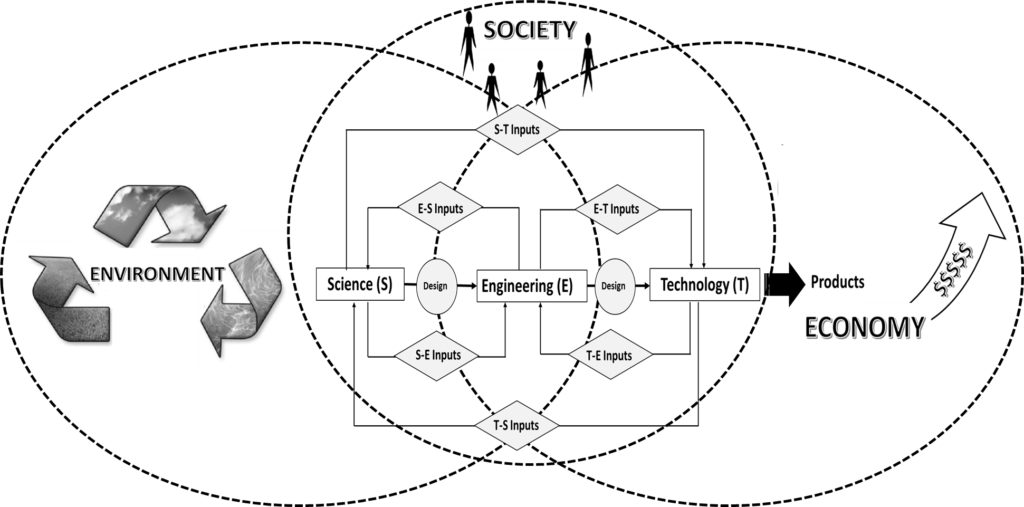
Fiber, Textile & Fashion Industry





to Provide Expertise




Sustainability and Circularity Consultancy Services
The UN Brundtland Commission established in 1980s by the UN General Assembly defined sustainability as;
“The development that meets the needs of the present without compromising the ability of future generations to meet their own needs.”
The essence of sustainability stems from the need for products and services that are environmentally-friendly, consume less energy, use less water and nonrenewable natural resources, cause no air or water pollution, and provide better life for humans today and into the future. It is unfortunate that most international reports on sustainability consider the textile and garment industry as one of the leading industries with respect to sustainability violation.

Few reports provided data evidence on the impact of the industry, but numerous reports and internet blogs were published only for the purpose of stirring human-right advocates and radical environmentalists against the industry.
One may argue that engineers and technologists who have been heavily involved in numerous industrial developments in the 20th century should have realized ecological impacts of their designs and prevent them. This is a valid argument since the focus of traditional engineering design has been primarily on the functional characteristics of products.
DNY Innova Textile Consulting Services Company is taking a leadership role in implementing “Integrated Sustainability” approaches in the textile industry. It is not enough that you are using sustainable fiber, it is a must that sustainability be implemented through the entire “lifecycle” of product from the raw material to the end-use and finally to the reutilization of used products.
DNY understands and implement lifecycle analysis and “circularity” approaches.
Textile Sustainability Models
DNY sustainability tasks are based on the famous IPAT Equation.
These tasks start with a general model in which the environmental impact (I) is divided into three major aspects:
- The P-Factor = Society
- The A-Factor = Economy
- The T-Factor = Technology
DNY performs a series of analysis including carbon footprint, water footprint, EF-Consumption, Biocapacity, and lifecycle analysis to evaluate companies’ sustainability status.
The P-Factor = Society
Human population is perhaps the only natural resource that continues to grow and increase. However, its survival required other natural resources including water, air, coal, oil, natural gas, phosphorus, other minerals, iron, soil, forests and timber. DNY analysis treats population growth as a societal moving-target factor Therefore, the fundamental question is: can the growing population today enjoy a better living environment without causing deterioration in tomorrow’s population living environment?The A-Factor = Economy
From a sustainability preceptive, one may argue that the issue is not necessarily the number of people on the planet, but rather the consumption rate of natural resources by people As Mahatma Gandhi once said: ‘the world has enough for everyone’s need, but not enough for everyone’s greed.’ It is now evident that due to variation in consumption, many highly affluent nations leave a much greater footprint on our planet than low affluent nations. Some low-income regions around the world emit less than one ton of CO2-equivalent per person per year, while some high-income regions around the world emit 6 to 30 tons of CO2-equivalent per person per year.The T-Factor = Technology
Achieving sustainable development in the textile and garment industry must be based on revolutionized concepts of the third parameter of the IPAT equation, which is technology. Unfortunately, technology in the IPAT equation is considered as an independent factor of direct effect on environmental impact, with more technology resulting in higher impact. For this reason, Ray C. Anderson (1934 –2011), the founder and chairman of Interface Inc., recommended that technology should be in the denominator of the IPAT equation, I = P × A/T; meaning, it should be treated as a positive index, the higher value of which, the lower the ecological impact. As it is well known, Interface Inc., a company started in 1973, was challenged twenty years later (1994) by its founder Ray Anderson to develop creative technology that can offset the I-index in the IPAT equation in what was described as ‘Mission Zero,’ or the elimination of negative impact on the environment by the year 2020. The giant commercial tile company formed the so-called ‘Eco Dream Team’ to meet its goals. The principle of this mission was based on many aspects including: elimination of waste, elimination of toxic substances from products, vehicles and facilities, using renewable energy, and closing the loop by redesigning processes and products to close the technical loop using recovered and bio-based materials. In the 2000-2019 period, Interface Inc. has managed to increase its stock value by 200%, and in some years, it reached 400% gain in stock value suffering only during the 2008 recession of this period.

